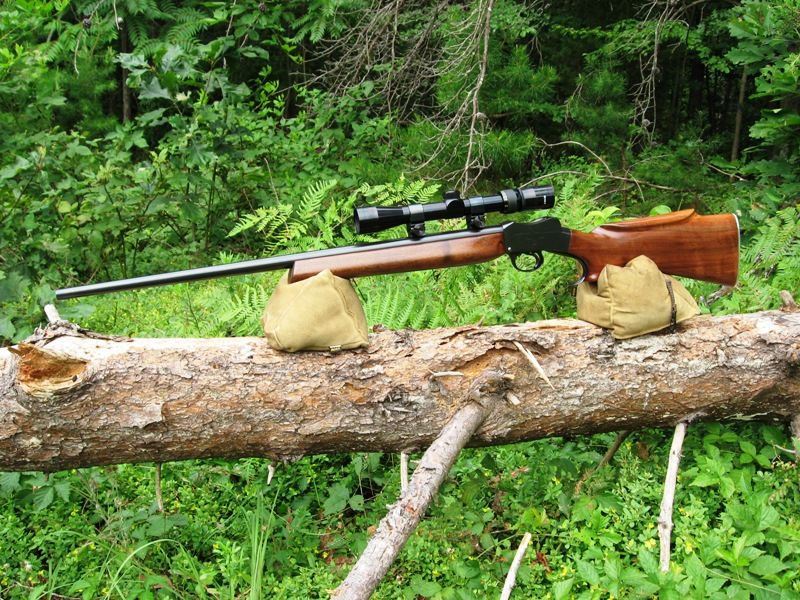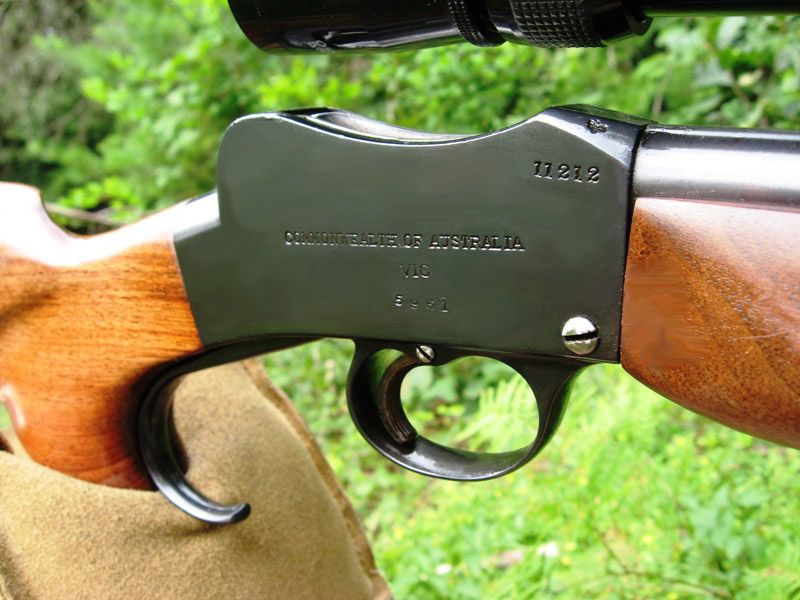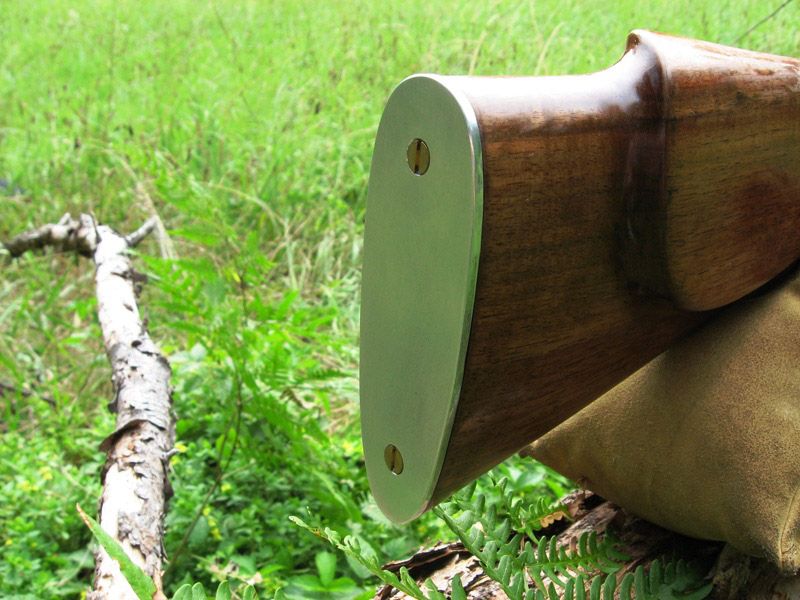Month: October 2024
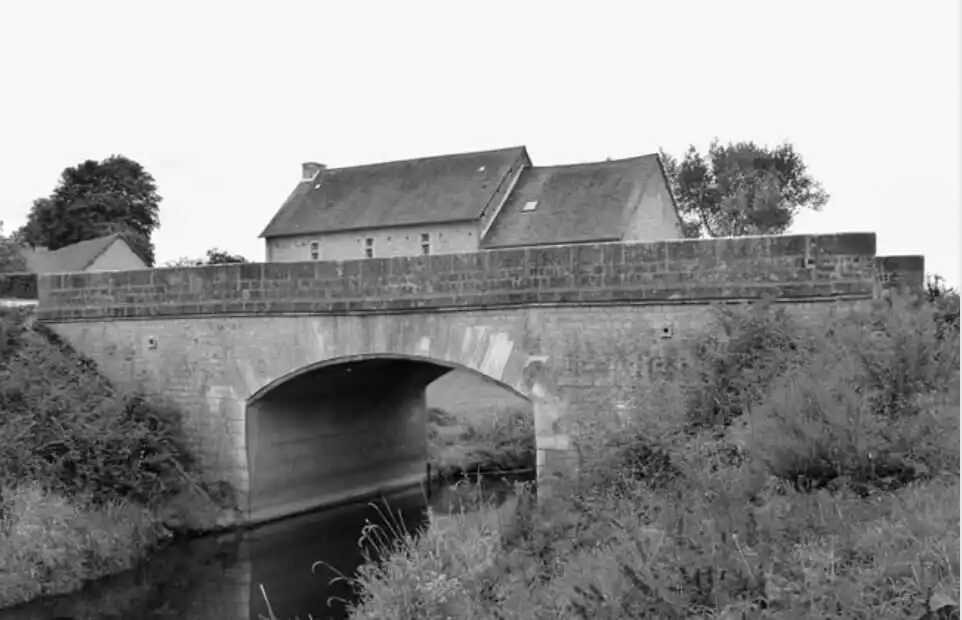
This unassuming little stone bridge was the site of some of the fiercest combat of World War 2.
The bridge is small and unassuming. In my part of the Deep South, it might be suitable to cross a small creek or generous drainage ditch. It is formed from meticulously cut stone. It’s the sort of bridge that, if left to its own devices, might last about forever. However, on the 6th and 7th of June, 1944, this modest little bridge was the focus of some of the worst fighting of World War 2. Historians have described the battle for this otherwise unremarkable place as, “Probably the bloodiest small unit struggle in the experience of American arms.”
Just like the real estate business, the relative value of a military objective is driven by its location. In military terms, this modest little bridge was prime beachfront condominium property. The La Fière Bridge represented a choke point on the major causeway leading off of Utah Beach. If US airborne forces couldn’t seize and hold this bridge, the assault troops couldn’t push inland. If the invasion did not secure a generous lodgment in the first few days then the Germans might be able to mobilize their armored reserves and push the Allied armies into the sea.
The handful of paratroopers and glidermen who found themselves at the La Fière Bridge on D-Day knew all of this. If they failed the invasion could fail. That unenviable gravitas weighed heavily on them all.
Citizen Soldiers
Robert Murphy’s father fought in World War 1. He helped young Bob alter his birth certificate when he was 17 so he could enlist in the US Army. That was in October of 1942. By D-Day, Bob Murphy was a trained Pathfinder assigned to the 505th Parachute Infantry Regiment. On D+1, Murphy was serving as a runner. Radio communications between infantry units back then were unreliable on a good day. Amidst the unfettered chaos of the battle for Normandy, the best way to pass a message was via the written word. It was Bob’s job to get those messages to combat commands under fire.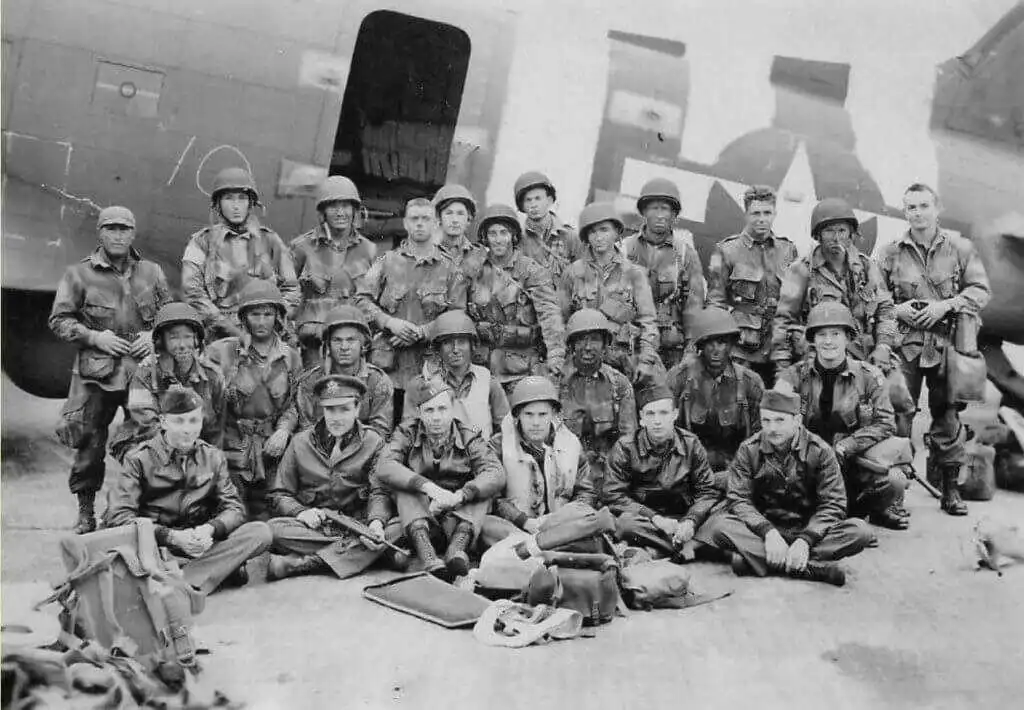
Paratroopers were horribly intermixed as they jumped into the darkness above the Norman countryside on 6 June 1944. Unit integrity was lost almost immediately. Scratch units pulled together troops from various commands under the control of whoever was handy.
Sergeant Billy Owen ended up commanding the forward elements in this case. Owen sent a message to his commander, LT John “Red Dog” Dolan, via Bob Murphy explaining that he was running out of healthy bodies and was perilously low on ammunition. Dolan sent Murphy back a handwritten note that read, “I know of no better spot to die. We stay.” And stay they did.
The Bridge Setting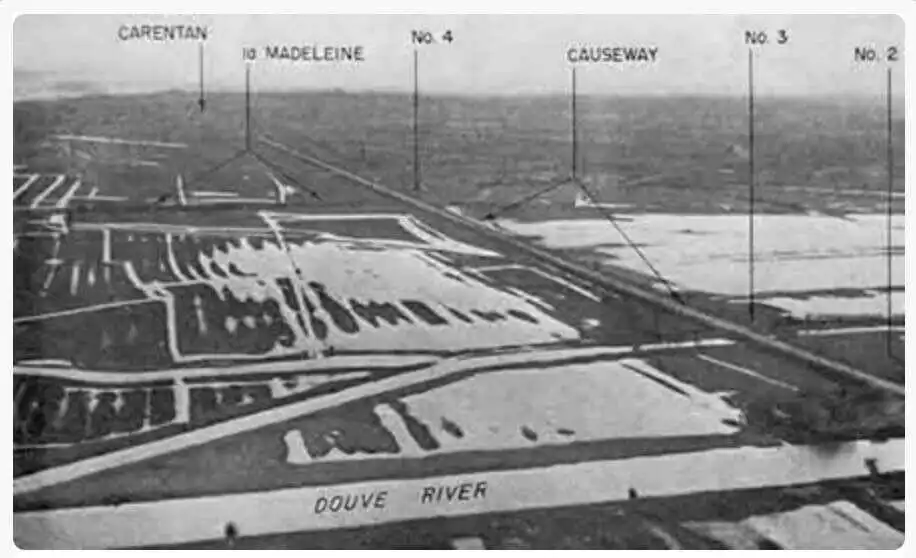
The bridge sits roughly a mile west of St. Mere-Eglise over the Merderet River. The Germans held the terrain west of the river, but it was marshy and soft. The Germans had a few tanks, but this was lousy tank country.
The German high command had intentionally flooded this area prior to the invasion to dissuade paratroopers. While quite a few American airborne troopers drowned during the initial drop, all that water now served to canalize the counterattacking German tanks onto the causeway approaching the bridge.
The Americans had disabled a truck on the approach to the bridge and had also planted a handful of antitank mines as part of their ad hoc defense. The road approaching the bridge curved sharply some 60 meters distant. This fortuitous bit of geography kept the attacking German tanks from taking advantage of their superior range. This was to be a pitiless close fight. A lot of men would die before the bridge issue was decided.
The Tank
Every Allied soldier who encountered a German tank seems to have reported it as either a Panther or Tiger. However, the reality was that the Wehrmacht and SS used a wide variety of tank types. This failure to standardize on a single simple design suitable for mass production helped them lose the war. On this most critical afternoon, the German tankers approaching the La Fière Bridge were manning a weird amalgam of repurposed armor.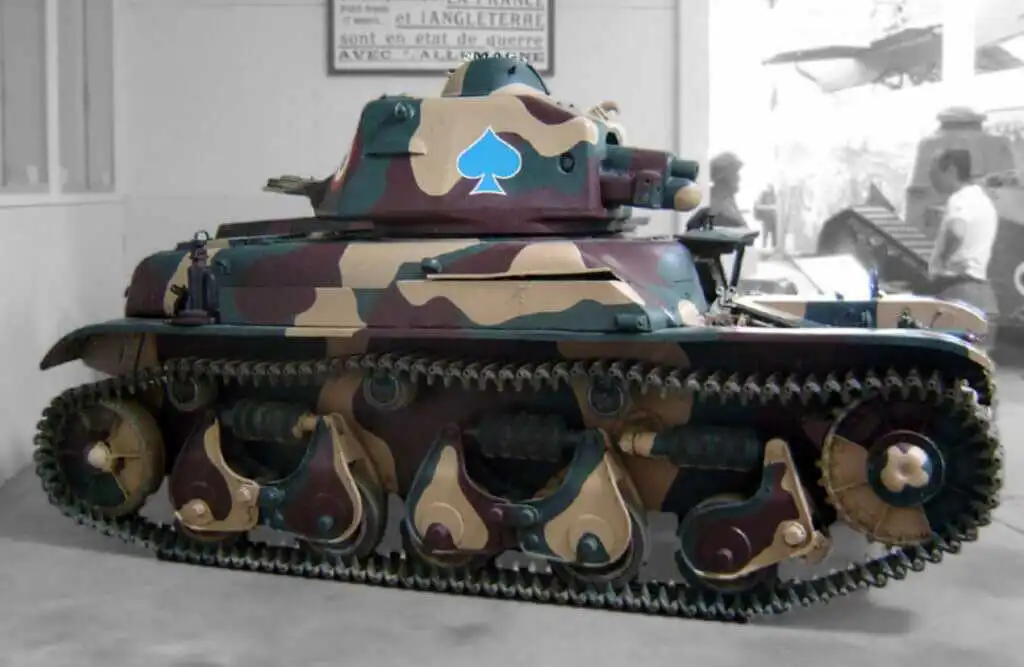
The Germans launched two major armored assaults against the bridge. Armored forces were drawn from the Panzer Ersatz und Ausbildungs Abteilung 100 (100th Panzer Replacement Battalion). This ad hoc unit was equipped with fourteen French Renault R35 tanks seized during the Blitzkrieg assault across the continent several years before. These small tanks were committed in support of the 1057th Panzer Grenadier Regiment tasked to dislodge the 505th PIR.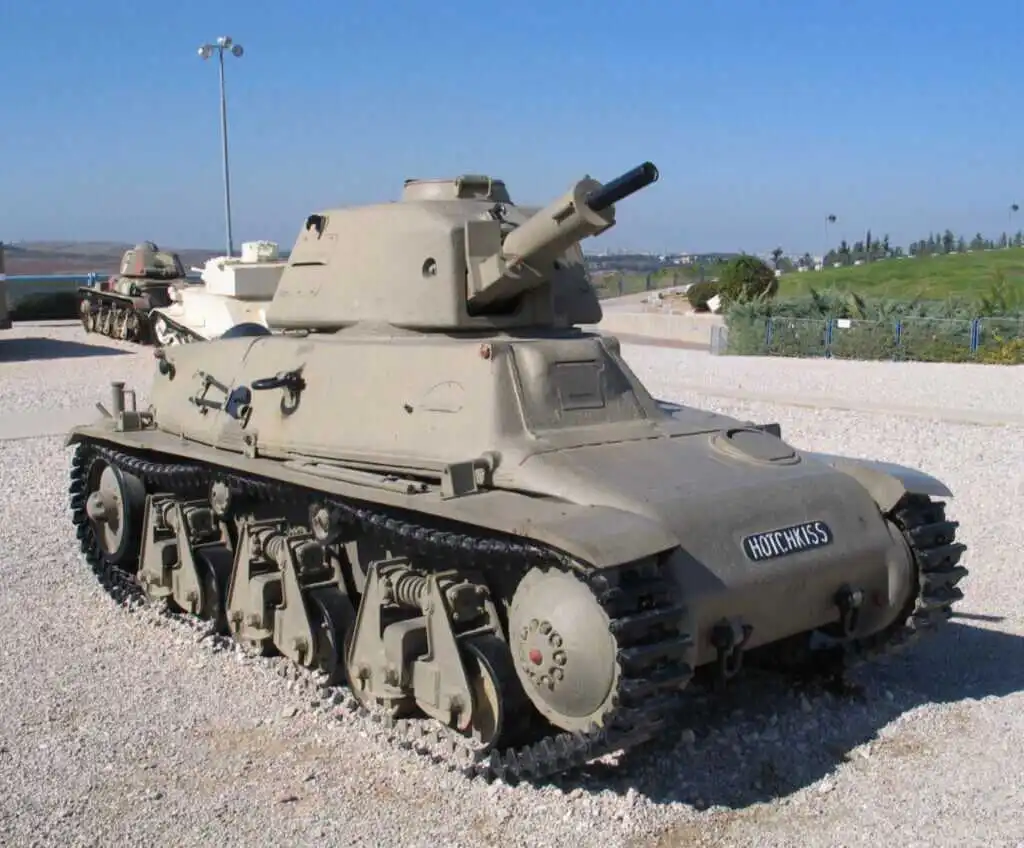
The Attacks on the Bridge
The first attack consisted of two R35s and a single Hotchkiss H39 amply supported with infantry. Both the R35 and the H39 were badly outclassed by this point in the war. Their armor plate was a mere 43mm thick at its maximum point and was therefore proof against small arms and little else. Each tank carried a 37mm main gun as well as a 7.5mm French machinegun.
These vehicles had previously been used for driver training and general security. If facing American Shermans or British Churchills, the R35 and H39 would have been easy meat. However, arrayed against lightly-armed paratroopers, these small two-man armored vehicles were nonetheless terrifying.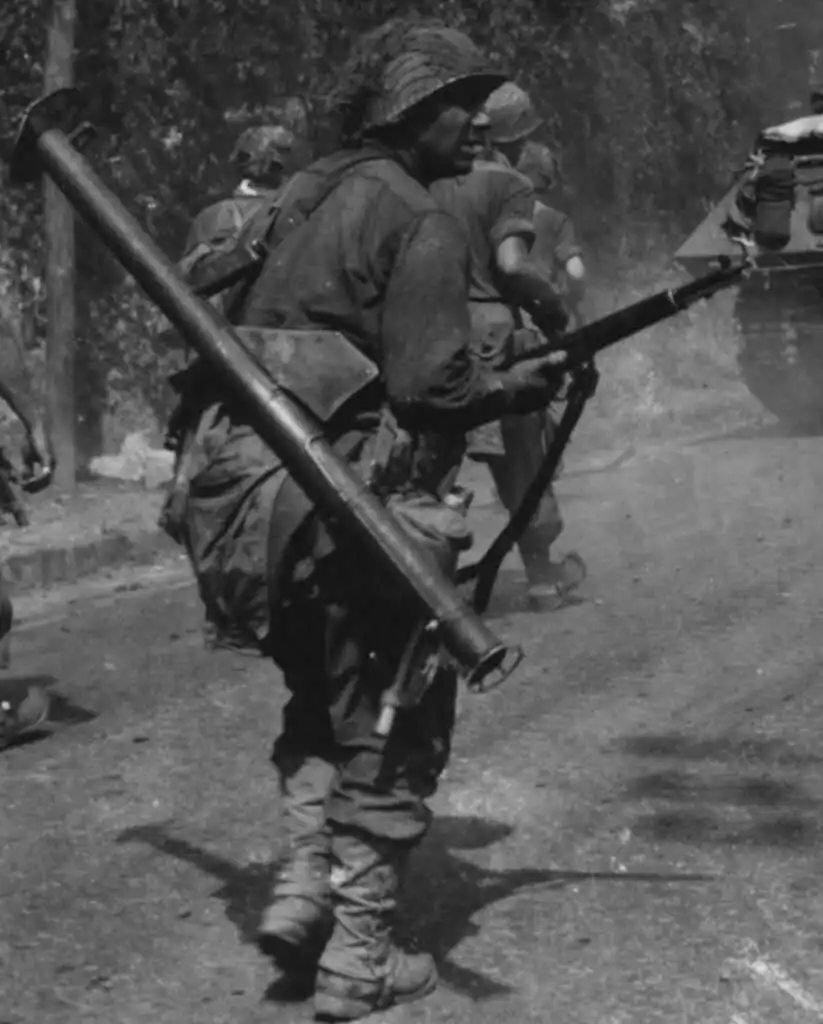
Arrayed against the attacking Germans, the Americans could count on a single 57mm antitank gun and three 2-man bazooka teams. LT Dolan sited the AT gun back some 150 yards from the bridge to give its crew an optimal field of fire. He held one Bazooka team in reserve and deployed the other two across the bridge.
Each bazooka team consisted of a gunner and a loader. As these were paratroopers at the end of their first full day in combat they were running low on everything, especially bazooka rockets. This was going to be an epic scrap.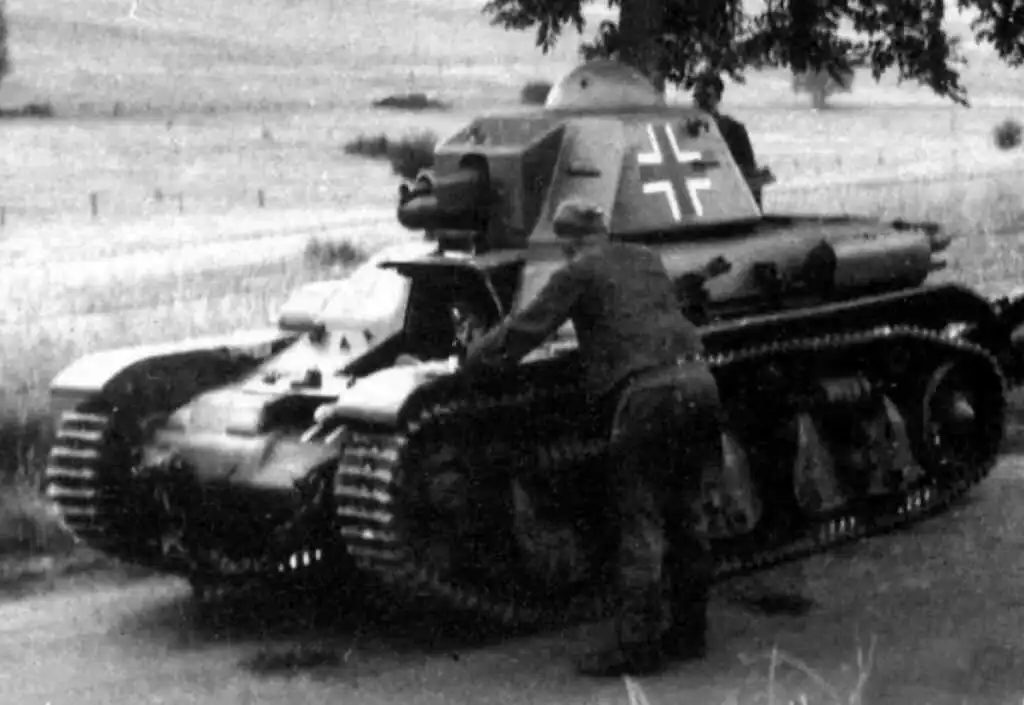
The two lead R35s attacked at around 1700 on 6 June. They were separated by about 15 yards with the H39 another 50 yards behind. The Germans were raining machinegun and mortar fire all over the defending Americans. LT Dolan posted one Bazooka team on each side of the road leading up to the bridge. They opened fire at a range of 40 yards.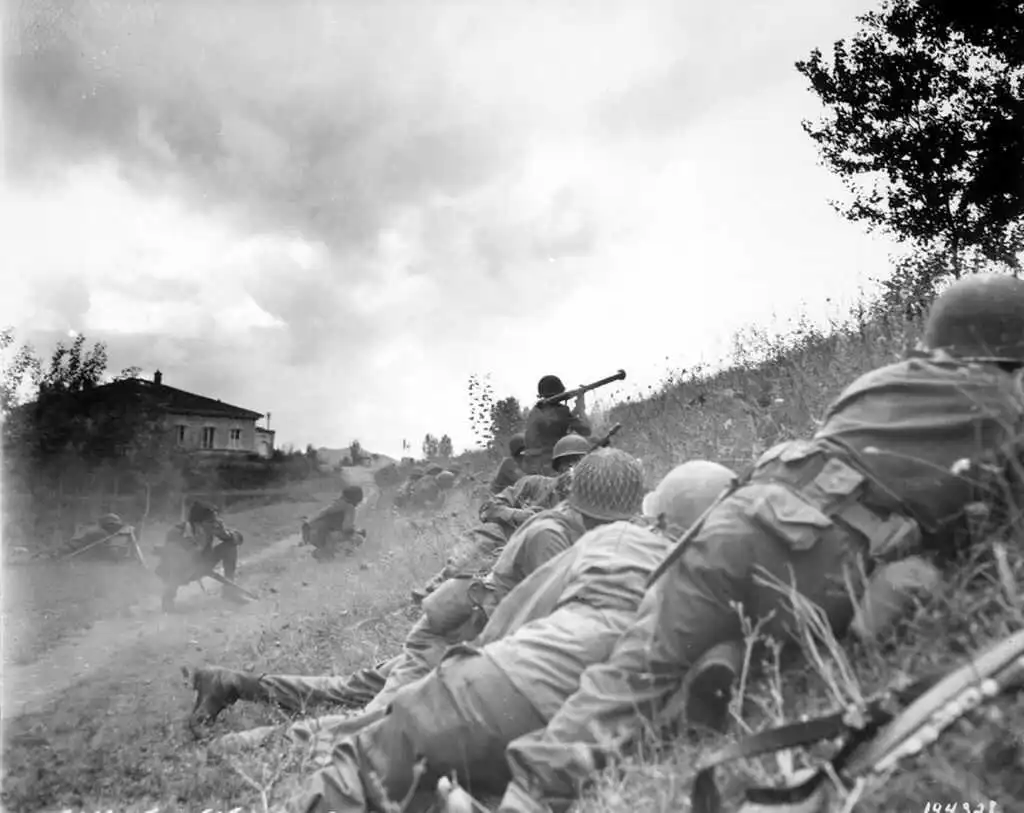
An American machine gunner killed the German tank commander in the lead tank with a burst of automatic weapons fire. Like most good German tank commanders, he was guiding his vehicle with his head outside the hatch. This was what ultimately killed him. As the commander in the R35 was also the gunner and loader, this effectively defanged the little French tank. American paratroopers Lenold Peterson and Marcus Helm nonetheless slammed 2.36-inch rockets into the lead tank as fast as they could cycle the weapon. Troopers Bolderson and Pryne did the same thing from the other side of the road.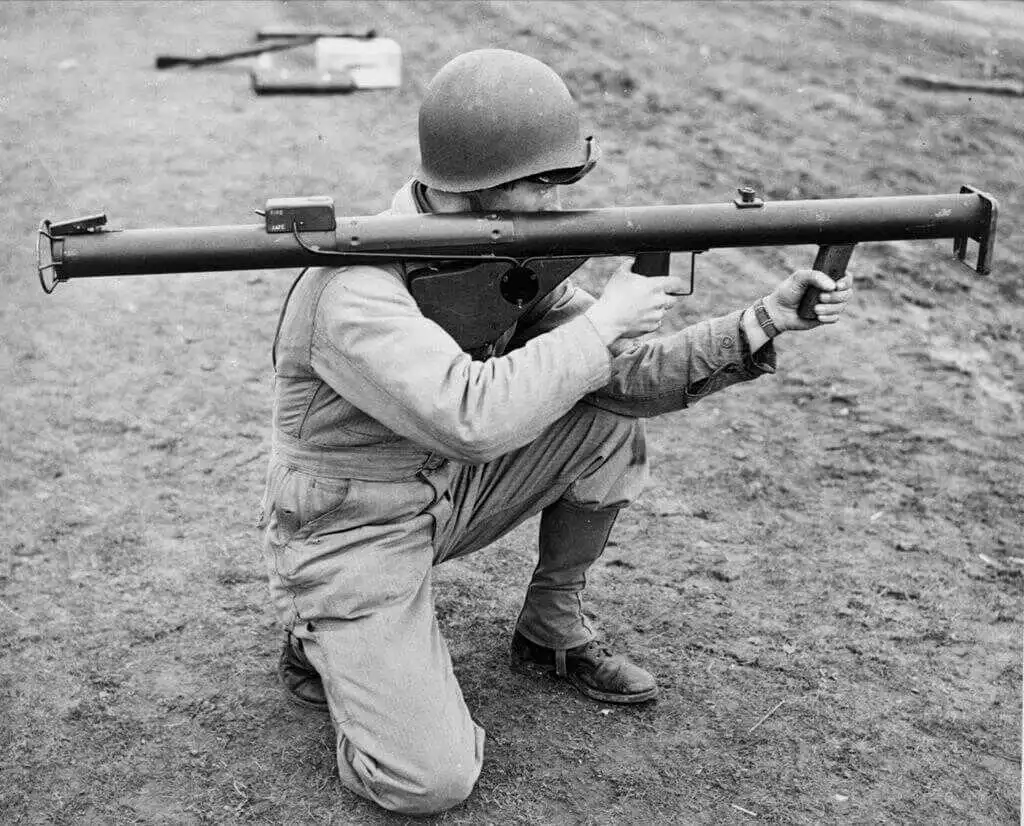
With the lead tank now disabled, the second armored vehicle pressed forward to push it out of the way. Helm and Peterson then shifted their attention to that tank, Bolderson and Pryne having been neutralized by heavy German fire. Peterson landed a rocket on the turret ring and another against the vehicle’s tracks. Now out of rockets and with the second tank on fire, Trooper Helm braved German fire to run across the road and retrieve the extra rockets abandoned by the other team, both of whose members were now wounded. Once back with Peterson, the two men began pumping rockets into the third tank.
According to LT Dolan, the four bazooka men loaded and fired their weapons as though they were on the training range despite the withering German fire. The 57mm AT gun ultimately found the range and knocked out the third tank for good. A Major Kellam and CPT Roysden attempted to run a bag of rockets up to these forward positions only to be cut down by mortar fire. In the process, both forward-deployed bazookas were destroyed.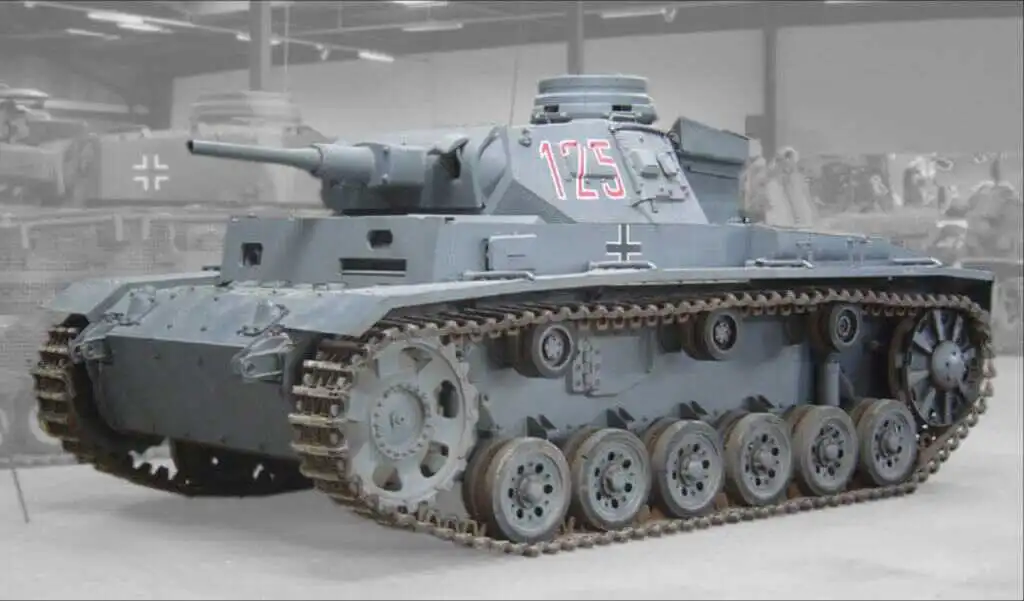
The following day the Germans tried again, this time with what was likely a pair of German Panzerkampfwagen Mk III’s. The Americans now had a single operational bazooka. Additionally, the AT gun crew had fled, taking the firing mechanism for the gun with them.
LT Dolan organized a desperate defense with Gammon grenades. The Gammon bomb was a British contrivance that consisted of little more than a cloth sack filled with explosives and equipped with a contact fuse. If you were lobbing Gammon grenades at German tanks your day was seriously sucking.
Just when things seemed most dire, a pair of young AT gunners returned with the firing mechanism for the gun and engaged the two German tanks, setting them both alight. Both of these young men earned the Silver Star, and the airborne company held until relieved.
The Weapon
What ultimately became the M1 2.36-inch bazooka began as a side project birthed by the famous rocket scientist Robert Goddard. The concept combined the warhead from the hand-thrown M10 antitank grenade with a rocket motor to substantially increase the weapon’s effective range. LT Edward Uhl was tasked to work out the details. He later explained, “I was walking by this scrap pile, and there was a tube that… happened to be the same size as the grenade that we were turning into a rocket. I said, That’s the answer! Put the tube on a soldier’s shoulder with the rocket inside, and away it goes.”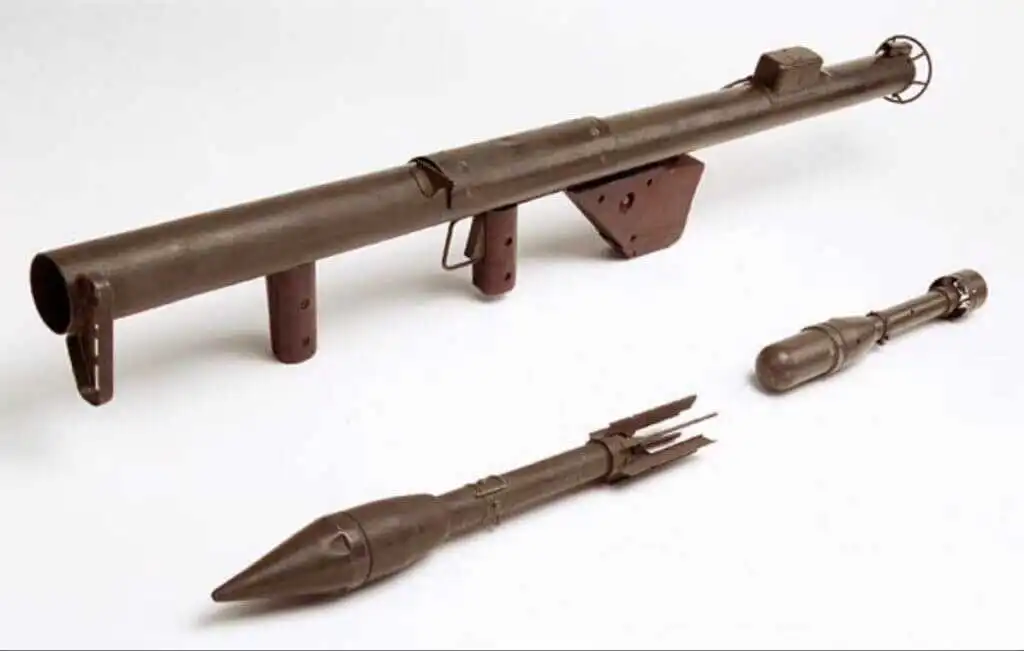
Early bazooka rounds sported a pointed tip that tended to ricochet at sharp angles. The later round-nosed version was a better all-aspect round.
Early launchers used dry cell batteries for ignition, but these were found to be unreliable. The definitive M9 two-piece takedown launcher employed a manual magneto sparker system to ignite the M6A3 blunt-nosed rocket. This improved round offered better detonation at sharp angles of impact than did the previous pointed rocket and would cut through 3.5-4 inches of steel armor. The M9 weighed 14.3 pounds and was 61 inches long.
The Rest of the Story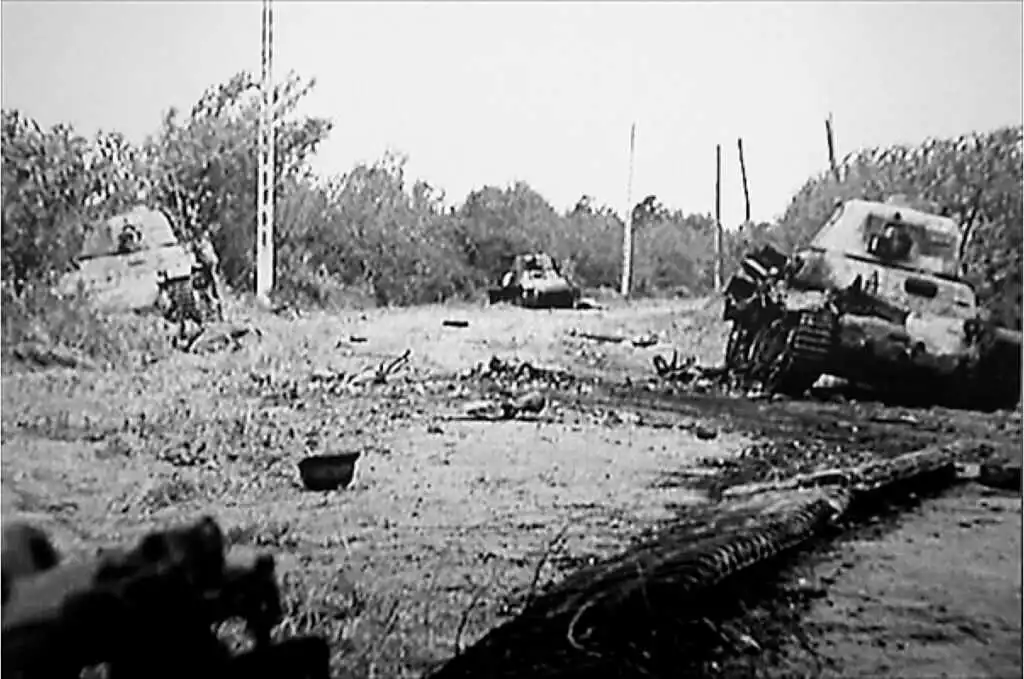
The bitter fight for the La Fière Bridge cost some 250 American lives, but they held the bridge. The combat power that flowed across that little bridge did not stop until Hitler killed himself and the Germans capitulated. The details of the engagement bear a striking similarity to the final scene in the epic Stephen Spielberg movie Saving Private Ryan. In this case, however, truth is even more compelling than fiction.
MAGNUM FORCE by Will Dabbs MD
S&W SUPER-SIZED THE CONCEPT OF BIG-BORE REVOLVER POWER
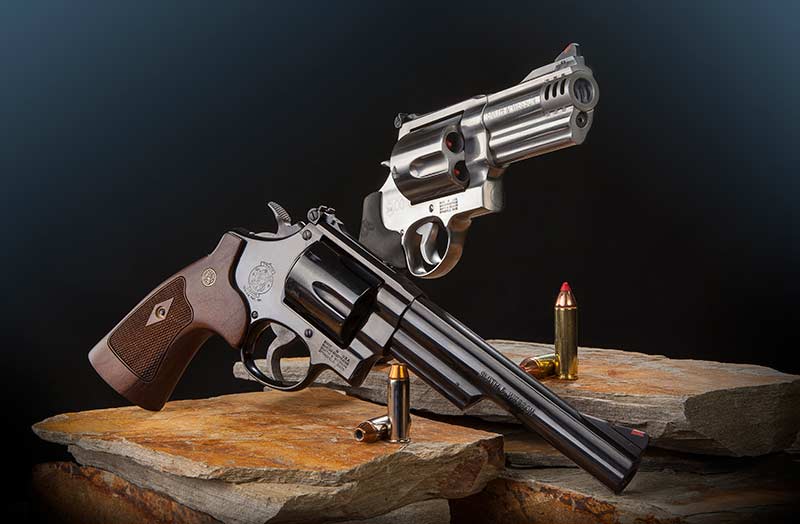 Smith & Wesson is known for producing amazingly powerful magnums,
Smith & Wesson is known for producing amazingly powerful magnums,
from the classic Model 29 .44 Mag. (below) to the .50-caliber S&W 500 (above).
The S&W 500 comes equipped with a nice
compensator/muzzlebrake attachment.
Why would anybody want one of those massive, large-bore Smith & Wesson handguns? The things are as big as hubcaps and as heavy as mortar rounds. They are uncomfortable to tote and deliver a butt whooping on the range. For certain specific applications, however, nothing else really strikes a proper balance between portability and serious downrange thump.
As big as a hubcap and launching rounds the size of sparkplugs,
the S&W 500 is for the gun nerd with impulse issues.
The swing-out cylinder of the 29 holds 6 rounds of .44 Mag.
THE APEX PREDATOR
I was piloting a US Army CH47D helicopter nap-of-the-earth tracking north to south just east of the Salcha River deep within the Alaskan interior. This massive machine maxed out at 50,000 pounds and coaxed 9,000 shaft horsepower out of its twin Lycoming turbines. Our airspeed was just south of 170 knots, around 200 mph, and we were making the devil’s own racket.
The radar altimeter read 10 feet or less as we skimmed the treetops enjoying the intoxicating adrenaline rush unique to military aviation. My flight engineer had wired a boombox into the intercom system to pour forth Led Zeppelin in all its screeching radioactive splendor. If ever there was a more perfect day I had yet to experience it. To the American taxpayer all I can really say is, from my heart, thanks.
Flying a helicopter low and fast is what keeps you alive in combat. At least that was the excuse we used this particular day. I cleared a thick stand of alders and broke out into a broad green meadow, dropping the aircraft down to 10 feet or less above the grass. Unexpectedly there appeared off our nose one of those enormous cinnamon grizzly bears for which Alaska is justifiably famous, minding his own business as he feasted on the bountiful berries seeming to blanket the state. Without thinking I tapped the cyclic backward a hair and bounced right over the big guy’s head, clearing him by perhaps a dozen feet.
My flight engineer came up on the intercom and reported as we passed over the animal he stood up on his hind legs and swatted at us. These bears are as big as Volkswagens. They’re not afraid of anything, not even a 25-ton, 99-foot screaming green bird. Was I ever to encounter that big cinnamon grizzly bear while out fishing for kings in his neighborhood, I can think of no better company than a big-bore Smith & Wesson revolver.
The S&W 500 shoots plenty straight for counter-bear applications.

The Smith & Wesson Model 29 .44 Mag. is capable of fine combat accuracy.
A BREED APART
“Magnum” is a Latin term indicating something large, great or important. A magnum bottle of wine carries 1.5 liters, or twice that of a normal sort of bottle. A magnum cartridge is a bigger, manlier version of something smaller and less powerful.
We really have four men to thank for the phenomenon of the magnum cartridge. Elmer Keith, Phillip Sharpe and D.B. Wesson conjured the .357 Mag. cartridge back in 1934. Thirty-five years later Clint Eastwood debuted the movie Dirty Harry and weaponized the term.
Harry Callahan and his Model 29 .44 Mag. changed the American lexicon. His testosterone-laden mannerisms embodied the ideal of the “Real Man.” At a time when the Age of Aquarius threatened to neuter American virility, Dirty Harry gently reminded the planet we were still the baddest boys on the block.
Smith & Wesson defines these handguns by their frame size, each family identified by a single letter appellation. While this may seem a bit simplistic, I suspect there is somebody out there who might benefit from the treatise. The J-Frame is the small compact sort. K-Frame guns are the medium-sized heaters. L-Frames are beefed-up version of the K-Frame and N-Frames are the large versions.
Just in case you are still feeling yet unfulfilled, Smith now offers the X-Frame revolvers in .500 S&W Magnum. These monster handguns dwarf even the N-Frame of the Model 29, throw slugs the size of your thumb and are what put the “holy” into Holy Crap!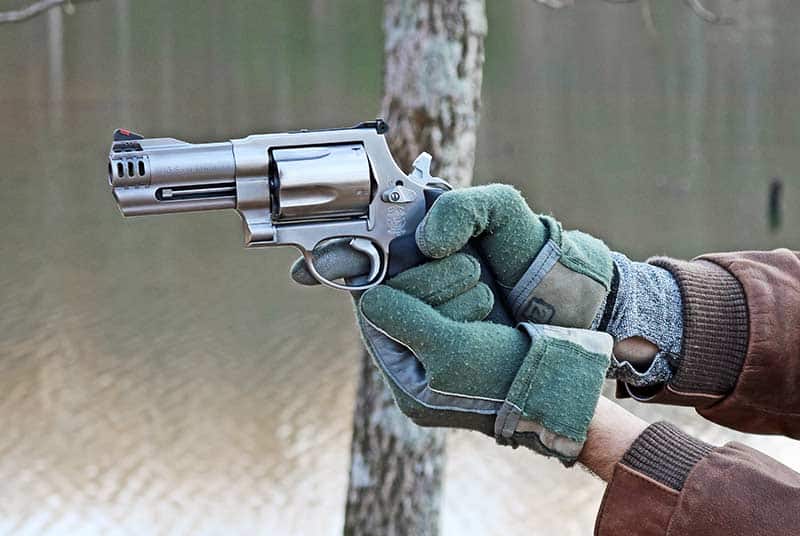
The S&W 500 X-Frame defines the term “handful.” Note Will is
using the classic “tea cup” grip to keep his fingers clear of that flash gap!
TRIGGER TIME ON HARRY’S HOGLEG
The phenomenon of Dirty Harry was as much about his firearm as it was about Clint Eastwood’s gritty character. The N-Frame .44 Mag. first saw light in 1955, but it sold tepidly until 1971 when the movie debuted. After that America’s gun stores couldn’t keep the big wheelguns in stock. Today the Model 29 is an American icon. All Smith wheelguns are great. The Model 29 is greater.
The 47.7-oz. Model 29 starts with a carbon steel frame and includes a fixed red ramp up front as well as an adjustable rear sight. The single-action/double-action trigger is wide and comfortable, sporting the same slick greasy mechanicals for which Smith is justifiably esteemed. The 6.5″ carbon steel barrel gives the gun an overall length of an even foot.
The cylinder, frame and barrel are all beautifully blued, while the unpretentious walnut grips exude a timeless American power vibe. There is just something mystical about the synergy of all those graceful lines. To my knowledge I have never been mistaken for cool, yet running Dirty Harry’s big revolver almost gets me there.
The .44 Mag. is a big cartridge. While Dirty Harry’s claim it can “Blow a man’s head clean off” might be a bit specious, few would dispute the fact this father of all modern big-bore rounds can be a handful. The gun is not fun, but it is accurate and vigorous, rocking back in recoil just enough for reliable dramatic effect. Should you wish to tweak the violence back a bit for practice, the gun runs reduced-charge .44 Spl. loads just fine as well. MSRP of the Model 29 is $1,169.
An interchangeable comp system on the S&W 500
optimizes the gun for jacketed or cast lead bullets.
THE X-FACTOR
The X-Frame S&W 500 is the most powerful production revolver in the world. The cartridge is so energetic the gun had to be built around a totally new frame. The X-Frame stands for “Extra Large,” and it is indeed a beast.
The test gun I received looks stubby given its 4″ barrel, and it weighs 56 oz. empty. The overall length is about 10″, and it packs five of those massive sparkplug-sized rounds onboard. Heavy? Yes, but let’s face it. Nobody buys this hand cannon to drop into their front pocket for a fast trip to the Quik-E-Mart for a gallon of milk and some diapers.
The front sight is a red ramp while the rear sight is fully adjustable. The beefy ported muzzle sports interchangeable compensators for jacketed and lead bullets. The overall effect is as though you scaled a 5-shot defensive revolver to fit Goliath (that Philistine giant stood around 9 feet tall). This howitzer of a handgun is like a grenade launcher riding on your belt.
The Model 29 packs in 6 rounds of .44 Mag. and
also lets you feel like Dirty Harry!
MOTHER OF ALL REVOLVERS
The experience of shooting the .500 is actually surprisingly pleasant. Recoil is mild and follow-up shots are smooth and fun. Fast 5-shot strings poured forth as smoothly as might cheese from a pressurized can. My nephew is a precocious 2-year-old toddler not yet fully housebroken, and he could manage this sweet-shooting gun … Just kidding! That’s all crap. Firing the short-barreled .500 is like wrapping your mitts around a bomb.
The mechanics are exactly what you would expect. The trigger is as smooth as a baby’s butt and much more predictable. The sights are easily acquired, and the geometry of the gun is indeed superlative. The X-Frame fills your hand, and the abbreviated tube keeps the whole package stubby enough to remain portable while wandering about where the Wild Things roam. The raw, unfiltered power, however, is attention-getting.
This gun was a fresh new experience for me. You’ve got to hang on to the thing. Recoil is like, well, touching off a .50-caliber cartridge in a snub-nosed handgun, but the sheer heft almost keeps things sane. Mass times velocity in one direction will always equal mass times velocity in the other direction. That’s not just a good idea. That’s the law.
At close pistol ranges the S&W .500 is quite accurate. At seven yards I could print nice tight clusters of 0.5″ holes. Out to perhaps 30 meters I could easily keep my rounds within minute-of-grizzly. This isn’t the gun you will use to plink cans with your grandchildren. However, if the threat weighs half a ton and might legitimately eat you, then this is the tool for the task. The MSRP is $1,369.
The Model 29 let Will channel his inner Dirty Harry —
but with recoil-absorbing gloves on, of course!
At the end of a protracted range session with these two
gargantuan revolvers, Will was bleeding despite his flight gloves.
A WORD OF CAUTION
The .38 Spl. revolvers our grandparents carried on their hips packed 225 foot-pounds of energy. The S&W .500 Magnum puts out 2,877. Do the math. From the perspective of pure Newtonian physics, this is like launching a dozen .38 Spl. rounds at once. This thing is a monster.
Nothing about the design is unsafe or poorly reasoned. It is simply the .500 Magnum operates at up to 60,000 psi. A quick jet of gas plasma scooting out through a gap of 6 to 7 thousandths of an inch between the cylinder and the forcing cone could foment a spot of mischief if not properly respected. Do not slip your thumb out abreast the cylinder gap on these big-bore revolvers.
In fact, running these two guns burned holes in the beanbag I use as a shooting rest and left my hand bleeding despite the fact I wore gloves. These are both serious guns for serious applications, not recreational plinkers. I’ve never been so glad to get done with a range session, but both of these cannons are legitimately effective hunting and survival tools.
The .500 S&W is a “stupid-big” round. Shown here from left to
right are the 9mm Parabellum, .45 ACP, .44 Magnum and
.500 S&W Magnum.
FINAL RUMINATIONS
There are a few legitimate reasons to consider a large-bore Smith revolver as a working gun. They are much more portable than even the most compact shotgun, and make for good company if you are out wandering about in the sort of places where the predators are big and bitey. Additionally, there is a timeless allure to just being the guy with the baddest gun on the range.
“Awesome” is an overused term. A generation of semi-literate surfers has all but ruined it. However, Smith & Wesson does indeed make some of the most awesome revolvers in the world. The Model 29 is powerful and cool, like a chunk of Americana you can hold in your hand. The S&W .500 Magnum is the stuff of ballistic legend. Either of these guns will put hair on your chest no matter your gender.

You should be well aware by now that guns are the most dangerous things in existence today, narrowly edging out Donald Trump supporters. But you may not know all of the worst things about guns.
To further prove the point, The Babylon Bee has compiled the following list of even more scary facts about guns:
- Touching one instantly turns you into a Republican: A fate worse than death.
- It takes 500 Kenyan child slaves to mine enough blasting powder to fill a single magazine clip with gun bullets: This is a crime against human rights.
- Guns are often a gateway drug to cannons: Sure, right now it’s “just a little Glock.” Next thing you know, you’re building a Civil War-era cannon in the backyard.
- The average gun owner shoots 5,000 people per year: You can’t argue with cold, hard statistics.
- If left unattended, guns have been known to commit mass shootings: The guns — and guns alone — are to blame.
- Guns literally invented murder: Before guns existed, nobody killed anyone. Ever.
- They are often used to stop dedicated, hardworking looters: They’re just trying to feed their families with those Louis Vuitton handbags and 80″ flatscreen TVs, you barbarian.
- Police carry guns: And we all know the police are everyone’s enemy.
- If Hitler had guns, he likely would have won World War 2: Just think about that.
If the list of terrifying facts above doesn’t scare you enough, you must be a MAGA voter, which is only slightly less dangerous than a gun.

